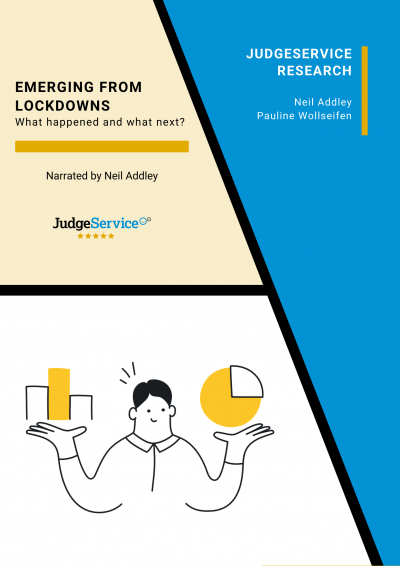Primary and Secondary Mover Advantages in the Automotive Industry
In the light of recent stock market valuations and reports of companies striving to go public with their valuations, most recently Deliveroo, I thought it would be a good time to discuss the idea of primary and secondary mover advantages.
Deliveroo is a business that, despite having a large market share and spending a lot of money on advertising, has yet to make a profit. With the recent concerns over their worker's rights, their share price dropped considerably as soon as it went public.
Will we see a similar thing happening in the automotive industry with new start-ups like Cazoo and Cinch, where they have valuations way in excess of their bricks and mortar competitors?
Neither of them are profitable and they both seem like a straight road to burning other people’s money on advertising. Maybe that works for the instigators? Who knows?
However, this did make me think more about the primary mover advantage, and the effect it has had on other businesses in the past.
What is the primary mover advantage?
Primary mover advantage or first-mover advantage is where a new competitor comes into a market, has a great proposition, and disrupts the lay of the land. They then spend a large amount of money on advertising, and this then, in theory, drives down their cost of acquisition.
If I think back to 20 years ago, OneSwoop was one of the first dot coms, “web-only, click to buy” to try and launch into the automotive industry. They had some impressive software but like Tesco Cars and Autoquake which followed them, they ultimately ran out of money.
The costs of holding stock, vehicle preparation, and delivery don’t evaporate just because you are an online-only dealership. Solely e-commerce works for many businesses by eliminating cost, I’m just not convinced it works for used cars.
Unlike buying new books and CD’s like we did with Amazon when it first appeared, or streaming movies like we do with Netflix, you don’t buy a new car every day, week or month. You change your car every 3, 4 or maybe more years.
Therefore, targeting people while they are in the market to buy a car means you have to sustain this level of brand awareness for a long time. At least triple any other marketing launch for it to have any effect.
I can almost smell the money burning!
The two best examples of primary mover advantage are Netflix and Tesla.
Netflix famously pitched to Blockbuster and was turned away. They then spent a lot of money making themselves a household name and have done a brilliant job of paving the way for streaming services.
Tesla came along, and there was no one else out there who were investing money into making electric cars seriously. General Motors made some a while ago and then crushed them all!
Tesla took the market by storm and its Model 3 has become the world’s best-selling plug-in electric vehicle. Tesla sold 500,000 units in 2020 alone.
Both Netflix and Tesla are examples of primary mover advantage where they have been new brands to enter the market and taken a huge share of that market. They benefit the consumer and competitors by highlighting the opportunities, you could argue that they ultimately become case studies for these markets.
However, I believe there is a secondary mover advantage too.
What is the secondary mover advantage?

For streaming services, the secondary mover is Disney.
Disney was able to see what Netflix had done right and announced a couple of years ago they were going to launch Disney+.
The news wasn’t received as well as they expected, with people disappointed that they were going to have to subscribe to yet another service to get the Disney brand they know and love.
However, they had the advantage of already owning loads of well-known brands like Marvel, Star Wars, Pixar and of course all the loved Disney classics that they were able to use. Plus promoting new series and movies that would only be accessible to Disney+ subscribers.
They also had what a lot of other brands don’t, deep pockets. They had the money to make it a really great service. Netflix, in 10 years, achieved 0-100 million subscribers.
Disney+ reached the same milestone in under 18 months.
Automotive
In the automotive industry, you have the Volkswagen group. They are planning to launch 30 electric cars over the next 2 or 3 years whereas Tesla is only planning on making 2 or 3 new models. What does Volkswagen have that Tesla doesn’t?
They’ve got over 100 factories that are used to churning out cars, they have an extremely strong distribution and dealer network worldwide. It has trusted suppliers, and again, really deep pockets.
Tesla has had a great run at the market, but I predict Volkswagen, Ford, Jaguar Land Rover, BMW, Kia, the revitalised Peugeot stable and most other manufacturers will shake that market by introducing more and more electric vehicles of their own.
How does this link to used car retailing?
I think that there is a chance that the new players will find a way to make themselves profitable, but they will spend a lot of money to see if that chance works for them. The costs that come with being a used car retailer won’t disappear like costs for Netflix did. Their model provided quicker gratification for consumers and reduced costs as they didn’t have to store thousands of videotapes or pay for distribution because they use the internet that we pay for ourselves.
In automotive, our insight has found the promoter scores for car dealers when selling over the phone or online has increased more than double.
This means they’ve got better and better at selling at a distance as they have been forced into new ways of selling cars during the pandemic.
Whilst some customers are prepared to buy online, many are also looking to buy as locally as possible, staying in their local bubble and avoiding travel at all costs.
I think it is likely that companies like Cazoo and Cinch will create the awareness needed for customers to be able to buy a car online, but won't be able to benefit from reduced costs. That leaves it open for car dealers to tap into online sales and take advantage of that themselves, providing a better service too.
Certainly, the pandemic has accelerated the move to digitalisation. It will be interesting to see what happens in the future.
To read more about how buyer behaviour has changed throughout the pandemic download our report for free here:

Did you find this blog post interesting or helpful? Subscribe for free with your email to be notified of when we upload new content!


